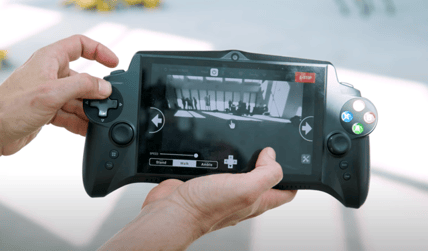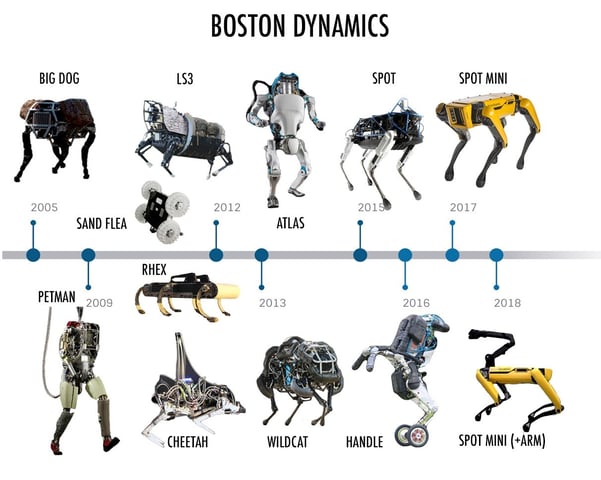
The new reality: Fido vs robot
A classic approach to Information Technology begins with a systems point of view. This starts with systems of record – all centred around tracking, managing and automating things – from supply chains, to inventory, to assets, along with information systems like accounting and finance. These morphed into Enterprise Resource Planning (ERP) systems in the 80’s and 90’s – designed to improve supply chain management, human resource productivity and the automation of (mostly) internal processes. These systems were inward-facing, tightly controlled, and ring-fenced from the outside world.
Then came Customer Relationship Management systems in the early 2000’s – centred around the customer relationship and tracking human behaviours. This coupled with the rise of the internet and e-commerce, along with the digitisation of social interaction – has given rise to systems of engagement (and behaviour) which span both internal and external systems. These systems are necessarily hybrid – combining internal and external data - as well as quantitative and qualitative measures, and are no longer internally facing.

The interrelationship between legacy systems and intelligent cyber-physical systems
The rise of systems of intelligence is part of the next generation of Information Technology – it leverages the two proceeding system types, combined with the ability to sense, understand, and then respond appropriately, adding a level of contextually-aware intelligence. It spans your customers, the things that create customer value, the partnerships or partner ecosystems that add value and the people and processes within your organisation. Digital intelligence goes beyond simple analytics and the provision of business intelligence – it delivers a new form of value in the automation of certain types of decisions that can be achieved using basic algorithms. It provides the basis for the application of Machine Learning and Artificial Intelligence.
This sensing, interpretation and response mechanism or cognition is found in organisms across the natural world - providing decision-making in the realm of what we would commonly call intellect. This was most notably surfaced when Google’s AlphaGo project managed to beat a human at the world’s most complex board game – Go.
The realm of cyber-physical systems is where this sensory loop leverages arrays of sensors and interprets the data from those sensors, to make some sort of cognitive (or intelligent) decision. This could be across a manufacturing process, a management system, supply chain management, as part of a functioning robotic system or with a bionic implant to assist with human mobility.
It is the combination of different systems and interplay between them that is creating an information, sensory and interpretation platform on which intelligent digital business models are being built.
Robot Dogs are at the very beginning of adoption in industrial settings. Spot is a practical manifestation of what cyber-physical systems are becoming capable of. Since 1992, Boston Dynamics has been working on developing cutting-edge support robots for the military. Spot is their first commercial robot available for industrial applications. Seen in this pre-launch documentary – showing Spot’s potential use in hazardous environments where it can go places that may not be safe, along with the ability to carry loads that humans can’t.
Figure 1: Verge Report on Boston Dynamics Spot Robot, pre-release.
Spot is an example of a cyber-physical system in action – particularly with it sensing, understanding and responding to a set of complex and changing conditions.
Take this quote from the video:
“Of course, we've seen walking robots before, but few of them had Spot's sense of balance. Accelerometers tell Spot if it's moving, and torque sensors in the joints tell it exactly how its weight is distributed. If Spot feels itself tipping forward, a protocol kicks in, telling it to find surer foot. It also has cameras on all four sides, so it can see where to plant its foot.”
 The commercialisation of semi-autonomous and autonomous robots is in its infancy, with niche applications still being validated with semi-autonomous inspection robots and drones being adopted in construction, industrial and hazardous environments.
The commercialisation of semi-autonomous and autonomous robots is in its infancy, with niche applications still being validated with semi-autonomous inspection robots and drones being adopted in construction, industrial and hazardous environments.

One of the implications of increased deployment of robots like Spot into industrial environments is that the human skillsets required will shift. Put simply, all the time that kids spend gaming will potentially come in handy when operating semi-autonomous robots like Spot, where the console mimics that of a game controller. Over time the need for physical strength to operate heavy machines is likely to diminish just as we saw with the move from agrarian to industrial society in the first industrial revolution. This brings with it a set of new educational, well-being and socio-economic challenges that we need to consider in the adoption of these cyber-physical systems.
Warehouse pick-and-pack robotics - accelerated by the pandemic - have become mainstream with the surge in online shopping. Ocado and Amazon are leaders in this field with significant parts of their logistics and supply chains leveraging robotics.
www.starship.xyz is one such example with autonomous drones that are used for deliveries of food and shopping in Milton Keynes, in the UK.
Moving beyond closed-loop warehouse environments, we are seeing delivery drone trials in various cities and campus environments across Europe and the United States for contactless delivery. While very much in the early stages of proofing commercial viability, they are paving the way in the automation goods transportation.
Most often associated with brash start-ups, the concept of an interconnected digital platform that connects devices, sensors and tracking to applications in the hands of consumers is now very much part of everyday life. Unlocking access using mobile devices for doors, to vehicles, to ride hailing and summoning food is now integrated into product and service delivery. For legacy enterprises adopting a platforming approach to systems build – leveraging historic infrastructure investments – that enables the opening up to new customer-facing service delivery applications is the promise of digital business.

An integrated and holistic approach to viewing systems and platforms enables your enterprise to unlock new business value. In this approach, digital intelligence sits at the core and utilises a concept of constantly sensing, understanding and responding. This approach is a pathway to mining the new fuel of (digital) business, which is data. This has proven to be a highly successful model for at least three of the four trillion-dollar platform businesses being - Amazon, Facebook and Google (Alphabet).
For existing enterprises there is much that can be learned from using a platform approach. Gartner has been advocating for this approach to enterprise IT for some time and provides a sound rationale for using this approach to systems development.
 Gartner's description of a platform as it pertains to digital business
Gartner's description of a platform as it pertains to digital business
The approach is about leveraging existing systems investments, to transform IT service delivery into a digital business enabler that allows you to both optimise and innovate - in collaboration with internal and external ecosystem partners.
In subsequent series of posts, we will unpack how to embark on this pathway for digital business transformation and digital business service delivery within existing enterprises.
Fitting the pieces together starts with understanding the macro-level trends and context of the fourth industrial revolution. From a technology viewpoint, looking at how to embrace hyper-scalable cloud, connectivity and pervasive use of devices – for both sensing and accessing services. Cyber-physical systems bring the necessary components that allow understanding to be gained and apply intelligence to problem solving in the form of Machine Learning, AI and Cognition – something we will delve into in the next chapter.
 Image Credit: Boston Dynamics, Reddit
Image Credit: Boston Dynamics, Reddit
In the meantime, if you want to understand more about the application of Spot for field inspections and exploration in hazardous environments and other aspects of Boston Dynamics, check out this video.
NASA Astronaut Mike Mullane shares how His experiences in high-pressure situations have given him a unique perspective on being agile while managing risk.
The modern CFO must now leverage their understanding and use of technology to help drive business strategy. They need to be business-focussed technologists.
James Slezak helped The New York Times innovate and adopt a digital business model to invest and prosper in the face of disruption.
Please complete this form if you're ready to take part in the complimentary program of on demand talks, interactive workshops and LIVE ideation hackathon - as well as access useful Digital Transformation frameworks, methodologies and resources.